What is Near-Infrared Spectroscopy (NIRS)?
NIRS is an imaging technology which uses a near-infrared light source on a catheter, which is inserted inside the coronary artery over a wire to study the composition of a block or plaque. NIRS can also be used to study other areas of the artery too, if required. It specifically gives information on the amount of fat or lipids contained in the arteries of the heart.
Once a conventional angiogram (See appropriate section) is done and a block is identified, (See image: 99% block in LAD artery)
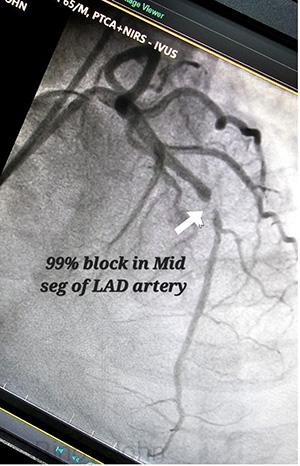
a NIRS analysis can be performed to know the composition of the block. The catheter emits Near-infrared waves at a wave length of 700 to 2500 nm and the light gets absorbed and scattered variably depending on the composition of the plaque or block, which is received by a detector creating a spectrum for analysis. This spectral data is then interpreted by various algorithms to identify various components of a block and form a visual colour representation of yellow (fat), red (blood, fibrous tissue and calcium), and black (indeterminate)which is called a ‘Chemogram’. (See image)
The image shows the chemogram of the above 99% block seen on the angiogram and consists entirely of fat, seen in yellow.

What is the use of NIRS chemogram?
Understanding the characteristics of the block helps to choose the hard-ware to match the block, like a regular balloons (for fat) (See image) or cutting balloons (for fibrous tissue) or rotablation (for calcified tissue) while performing the angioplasty and stenting.
The 99% block seen in the above angiogram image, which was made entirely of fatty was then opened with a regular balloon.
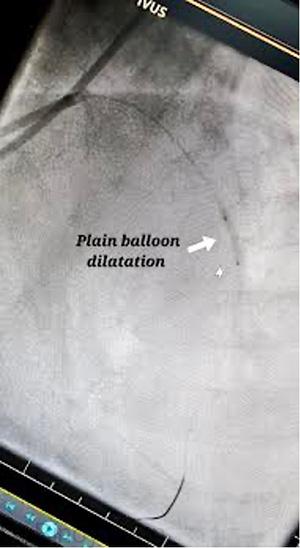
and then a stent was positioned as for a conventional angioplasty (See image)
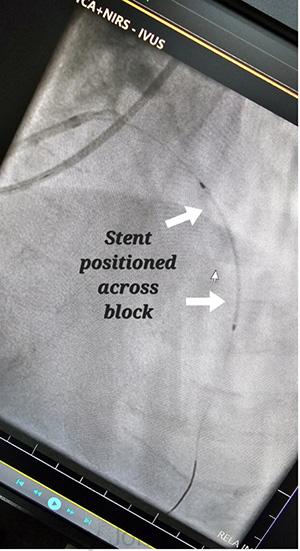
and deployed to get a good flow. (See image)
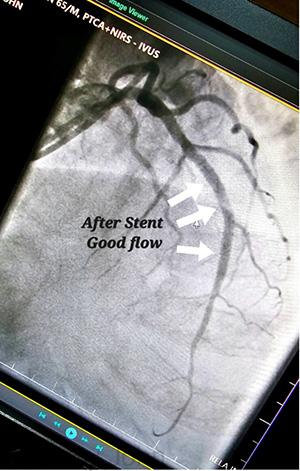
NIRS was then performed again after stent implantation and the chemogram showed a markedly reduced fatcontent in the area of the previous block. (See image)
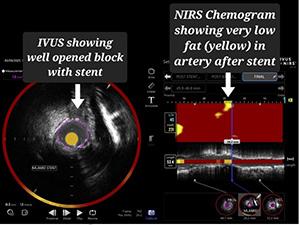
In addition, NIRS analysis also helps the cardiologist to advise appropriate medications for fat dominant blocks and also helps the patient understand the nature of the block and adopt life style modifications as low fat diet and exercise.
The currently available NIRS system comes in combination with Intra-Vascular Ultra-Sound (IVUS) (See section on IVUS) on a single catheter. This allows both IVUS and NIRS information to be obtained simultaneously. In this patient both IVUS information and NIRS chemogram were used to perform the angioplasty and stenting with good results.
Expertise: NIRS was introduced in India in Nov 2023 and Dr Binoy John is amongst the few interventional cardiologists experienced with the NIRS technology and its appropriate use.






